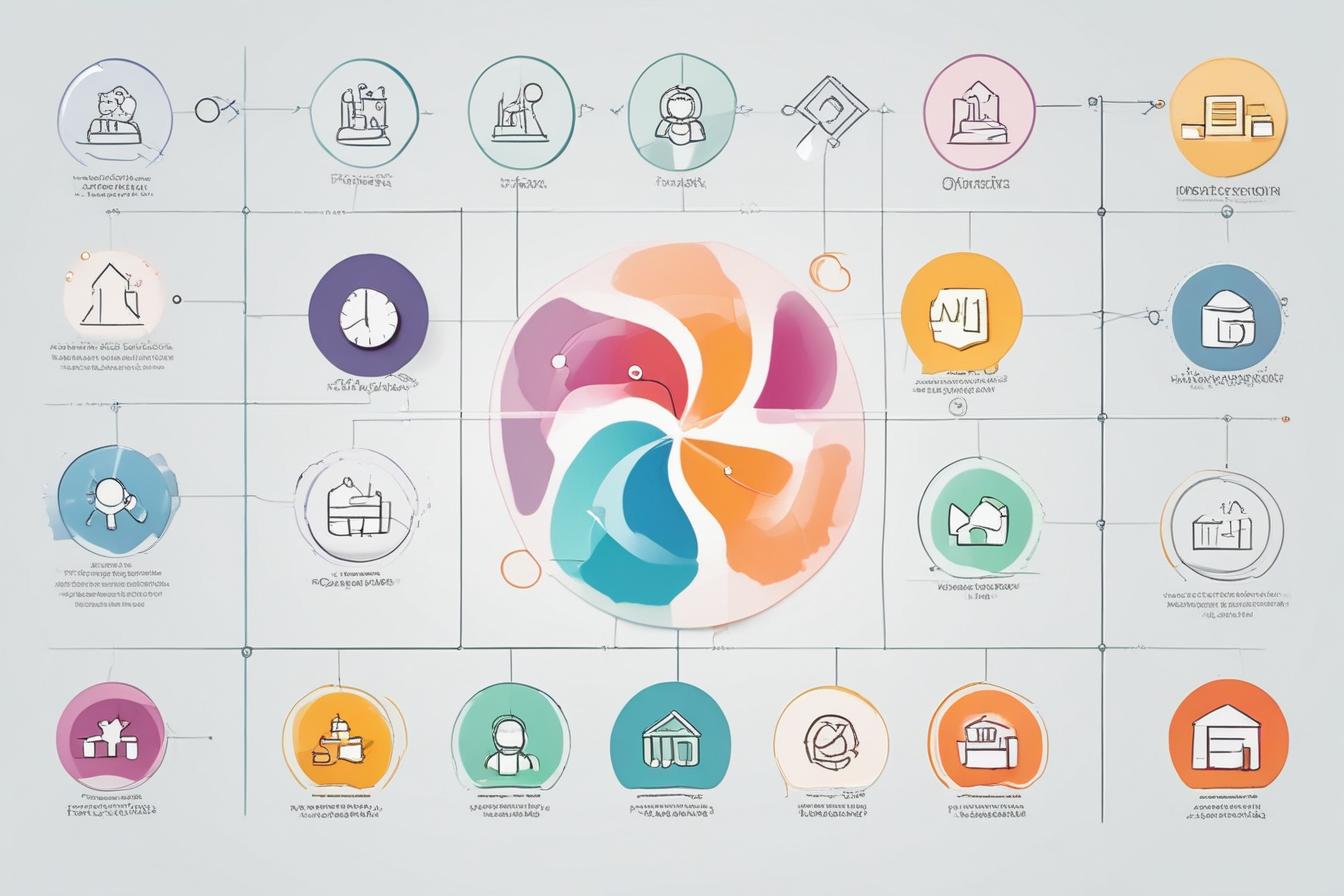What is Attribution Modeling SEO?
Attribution modeling SEO is the practice of analyzing and attributing the credit for a conversion or desired action to the various touchpoints or marketing channels that influenced the consumer’s journey. In the context of SEO, it involves understanding how organic search traffic and content marketing efforts contribute to a user’s path to conversion, even if the final click did not come directly from a search engine result.
Why Attribution Modeling Matters for SEO
Traditional SEO metrics often focus solely on the last interaction or click that led to a conversion, overlooking the crucial role that earlier touchpoints played in shaping the user’s decision-making process. Attribution modeling SEO provides a more holistic view by recognizing that a consumer’s path to conversion is rarely linear and may involve multiple interactions across various channels, including organic search, social media, email marketing, and more.
Role of Content Marketing in Attribution Modeling
Content marketing plays a pivotal role in attribution modeling SEO. By creating high-quality, informative, and engaging content that resonates with your target audience, you can influence their decision-making process at various stages of the buyer’s journey. Well-crafted content can attract users through organic search, nurture their interest, and ultimately guide them towards a conversion.

Benefits of Attribution Modeling for SEO
Improved ROI Measurement
Attribution modeling SEO allows you to accurately measure the return on investment (ROI) of your SEO and content marketing efforts. By attributing credit to the various touchpoints that influenced a conversion, you can better understand the true value and impact of your SEO activities, enabling you to make more informed decisions about resource allocation and optimization.
Smarter Budget Allocation
With a deeper understanding of which channels and touchpoints drive the most conversions, you can optimize your budget allocation to focus on the most effective strategies. Attribution modeling SEO helps you identify the high-performing content and channels, allowing you to allocate more resources to those areas while reducing investment in less impactful activities.
Improved User Experience
By analyzing user behavior and interactions across multiple touchpoints, attribution modeling SEO can provide insights into the preferences and pain points of your target audience. This knowledge can inform your content strategy and help you create a more seamless and personalized user experience, ultimately leading to higher engagement and conversions.
Types of Attribution Models for SEO
Last-Touch Attribution
The last-touch attribution model gives full credit for a conversion to the final touchpoint or marketing channel that drove the user to complete the desired action. While simple, this model fails to account for the influence of earlier touchpoints and can undervalue the role of content marketing and organic search in the overall customer journey.
First-Touch Attribution
In contrast to the last-touch model, the first-touch attribution model assigns all credit for a conversion to the initial touchpoint or channel that introduced the user to your brand or product. While this approach recognizes the importance of the first interaction, it may overvalue that touchpoint and underestimate the impact of subsequent touchpoints.
Linear Attribution
The linear attribution model distributes the credit for a conversion equally across all touchpoints involved in the user’s journey. This model acknowledges the contribution of every interaction but may not accurately reflect the varying levels of influence that different touchpoints have on the final decision.
Time Decay Attribution
The time decay attribution model assigns more credit to the touchpoints closest to the conversion, with the credit decreasing exponentially for earlier touchpoints. This model recognizes that more recent interactions often have a stronger influence on the final decision, while still accounting for the role of earlier touchpoints.
Position-Based Attribution
The position-based attribution model assigns the majority of credit to the first and last touchpoints, with the remaining credit distributed evenly among the intermediate touchpoints. This approach acknowledges the importance of both the initial introduction and the final touchpoint that drove the conversion, while still recognizing the contribution of other interactions.

How to Implement Attribution Modeling for SEO
Integrate Data from Multiple Sources
To implement attribution modeling SEO effectively, you need to integrate data from various sources, including your website analytics, customer relationship management (CRM) system, and marketing automation platforms. This consolidated data will provide a comprehensive view of the user’s journey across multiple touchpoints.
Leverage Attribution Modeling Tools
Many marketing and analytics platforms offer built-in attribution modeling capabilities or integrations with third-party attribution modeling tools. Tools like Google Analytics, Adobe Analytics, and ContentScale.fr can help you analyze and attribute credit for conversions based on different attribution models, providing valuable insights for your SEO and content marketing strategies.
Define Conversion Goals and Touchpoints
Clearly define your conversion goals and identify the relevant touchpoints that contribute to those conversions. This may include organic search traffic, social media interactions, email campaigns, content downloads, and more. By mapping out the touchpoints, you can better understand the user’s journey and attribute credit accordingly.
Implement Tracking and Attribution Codes
To accurately track user interactions and attribute credit, you need to implement tracking codes and attribution parameters on your website and across your marketing channels. This may involve using UTM parameters, pixel tracking, or other tracking mechanisms to capture user data and associate it with specific touchpoints.
Measuring and Analyzing Attribution Data for SEO
Key Performance Indicators (KPIs)
Define and track relevant KPIs to measure the success of your attribution modeling SEO efforts. These may include metrics such as conversion rate, revenue attribution, cost per acquisition, and return on investment (ROI) across different attribution models.
Identify Top-Performing Touchpoints
Analyze your attribution data to identify the touchpoints and channels that contribute the most to conversions. This information can help you optimize your SEO and content marketing strategies by focusing on the most impactful activities and channels.
Conduct Funnel Analysis
Perform funnel analysis to understand user behavior and identify drop-off points along the conversion path. By analyzing user interactions at each touchpoint, you can identify opportunities for optimization and improve the overall user experience, leading to higher conversion rates.
Leverage AI-Powered Content Generation
To streamline your content creation process and maximize the impact of your SEO efforts, consider leveraging AI-powered content generation tools like ContentScale.fr. By utilizing advanced natural language processing and machine learning algorithms, these tools can generate high-quality, SEO-optimized content at scale, saving you time and resources while ensuring consistent quality.

Best Practices for Attribution Modeling SEO Strategies
Align Attribution Model with Business Goals
Select an attribution model that aligns with your business objectives and accurately reflects the importance of different touchpoints in your customer journey. For example, if your goal is to maximize long-term customer value, a position-based or time decay model may be more suitable, as they account for the influence of early touchpoints.
Continuously Optimize and Iterate
Attribution modeling SEO is an ongoing process that requires continuous optimization and iteration. Regularly analyze your attribution data, identify areas for improvement, and adjust your strategies accordingly. Testing different attribution models and content approaches can help you refine your tactics and maximize the impact of your SEO and content marketing efforts.
Leverage Audience Insights
Use the insights gained from your attribution data to better understand your target audience’s behavior, preferences, and pain points. Incorporate these insights into your content strategy and user experience optimization efforts to create more relevant and engaging content that resonates with your audience at every touchpoint.
Foster Cross-Channel Integration
Effective attribution modeling SEO requires seamless integration between various marketing channels, such as organic search, social media, email marketing, and paid advertising. Ensure that your content and messaging are consistent across all channels and that you leverage cross-channel data to provide a cohesive and personalized user experience.
Leverage Social Proof and Authority Signals
To enhance the credibility and trustworthiness of your content, incorporate social proof and authority signals, such as customer testimonials, industry awards, expert quotes, and authoritative backlinks. These elements can increase user confidence and improve the likelihood of conversions.
Don’t forget to check out ContentScale.fr, a powerful AI-powered content generation tool that can help you create high-quality, SEO-optimized content at scale, while saving you time and resources. With ContentScale.fr, you can stay ahead of the competition and maximize the impact of your attribution modeling SEO strategies.
Conclusion
Attribution modeling SEO is a powerful approach that provides a holistic view of the user’s journey and the various touchpoints that influence their decision-making process. By accurately attributing credit to the various channels and content pieces that contribute to conversions, you can optimize your SEO and content marketing strategies, improve ROI measurement, and allocate your resources more effectively.
To succeed with attribution modeling SEO, it’s essential to select the appropriate attribution model, integrate data from multiple sources, leverage attribution modeling tools, and continuously optimize and iterate based on your findings. By following best practices and leveraging AI-powered content generation tools like ContentScale.fr, you can create high-quality, engaging content that resonates with your audience and drives conversions at every stage of the buyer’s journey.
Unlock the full potential of your content marketing ROI and stay ahead of the competition by implementing attribution modeling SEO strategies today. Don’t wait – start maximizing the impact of your SEO and content marketing efforts with ContentScale.fr!
